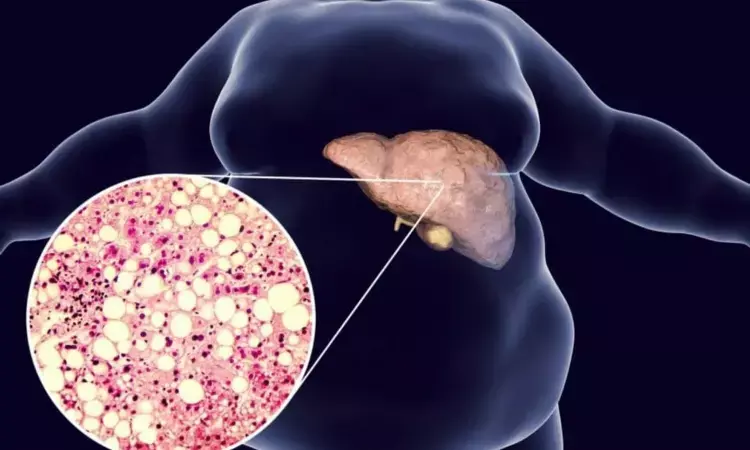- Home
- Medical news & Guidelines
- Anesthesiology
- Cardiology and CTVS
- Critical Care
- Dentistry
- Dermatology
- Diabetes and Endocrinology
- ENT
- Gastroenterology
- Medicine
- Nephrology
- Neurology
- Obstretics-Gynaecology
- Oncology
- Ophthalmology
- Orthopaedics
- Pediatrics-Neonatology
- Psychiatry
- Pulmonology
- Radiology
- Surgery
- Urology
- Laboratory Medicine
- Diet
- Nursing
- Paramedical
- Physiotherapy
- Health news
- Fact Check
- Bone Health Fact Check
- Brain Health Fact Check
- Cancer Related Fact Check
- Child Care Fact Check
- Dental and oral health fact check
- Diabetes and metabolic health fact check
- Diet and Nutrition Fact Check
- Eye and ENT Care Fact Check
- Fitness fact check
- Gut health fact check
- Heart health fact check
- Kidney health fact check
- Medical education fact check
- Men's health fact check
- Respiratory fact check
- Skin and hair care fact check
- Vaccine and Immunization fact check
- Women's health fact check
- AYUSH
- State News
- Andaman and Nicobar Islands
- Andhra Pradesh
- Arunachal Pradesh
- Assam
- Bihar
- Chandigarh
- Chattisgarh
- Dadra and Nagar Haveli
- Daman and Diu
- Delhi
- Goa
- Gujarat
- Haryana
- Himachal Pradesh
- Jammu & Kashmir
- Jharkhand
- Karnataka
- Kerala
- Ladakh
- Lakshadweep
- Madhya Pradesh
- Maharashtra
- Manipur
- Meghalaya
- Mizoram
- Nagaland
- Odisha
- Puducherry
- Punjab
- Rajasthan
- Sikkim
- Tamil Nadu
- Telangana
- Tripura
- Uttar Pradesh
- Uttrakhand
- West Bengal
- Medical Education
- Industry
Intermittent fasting improves health in patients with fatty liver disease

USA: Adults with nonalcoholic fatty liver disease (NAFLD) who followed intermittent fasting with exercise were able to reduce hepatic steatosis, researchers state in a study published in Cell Metabolism.
Nutrition researchers at the University of Illinois Chicago studied 80 people with nonalcoholic fatty liver disease. They reported that over a period of three months, people who exercised and alternated feast and fast days eating without restriction one day and eating 500 calories or less the next-saw increased insulin sensitivity and decreased liver fat, weight and ALT, or alanine transaminase enzymes, which are markers for liver disease.
Nonalcoholic fatty liver disease is a buildup of fat and inflammation in patients who drink little to no alcohol. Approximately 65% of obese adults have the disease, and this condition is strongly related to the development of insulin resistance and Type 2 diabetes. If left unchecked, fatty liver disease can lead to more serious complications like cirrhosis or liver failure, but there are limited good drug options for treating the condition.
Study author Krista Varady called the findings “pretty amazing.”
“When we compared the results of our study groups, we saw clearly that the most improved patients were in the group that followed the alternate-day fasting diet and exercised five days a week,” said Varady, professor of nutrition at the College of Applied Health Sciences. “The people who only dieted or exercised did not see the same improvements, reinforcing the importance of these two relatively inexpensive lifestyle modifications on overall health and combating chronic diseases like fatty liver disease.”
Participants in the clinical trial were randomized to one of four groups: an alternate-day fasting group, an aerobic exercise group, a combined group and a control group in which participants made no changes to their behaviors. Participants in the diet groups tracked their food intake and participants in the exercise groups used an elliptical machine in Varady’s lab for one hour, five days a week.
Varady said the study did not test if alternate-day fasting was better or worse than other diets when combined with exercise, but she was surprised to see very few participants drop out of the study.
“Alternate-day fasting and exercise interventions can be difficult for people to stick to and in prior studies we have seen significant dropout. It was very interesting to see that in this trial, we had very high adherence to the interventions,” said Varady, who thought the study’s implementation at the beginning of the COVID-19 pandemic in 2020 could be a plausible explanation for the variation.
In addition to seeing improved metabolic indicators, the study authors also noted there were no serious safety events during the trial — the patients were able to safely maintain the diet and exercise for the three-month study, which Varady thinks is an indicator the intervention may be a good option for people with fatty liver disease who want to improve their health without pharmaceuticals, which can have side effects.
In their paper, “Effect of alternate day fasting combined with aerobic exercise on non-alcoholic fatty liver disease: A randomized controlled trial,” which is the first study to examine the effect of intermittent fasting combined with exercise on nonalcoholic fatty liver disease outcomes, the authors write: “Our findings also indicate that the combined intervention was effective for reducing body weight, fat mass, waist circumference, ALT, fasting insulin, insulin resistance, and increasing insulin sensitivity, among patients with obesity and NAFLD, versus controls.”
Reference:
Mark Ezpeleta, Kelsey Gabel, Sofia Cienfuegos, Faiza Kalam, Shuhao Lin, Vasiliki Pavlou, Zhenyuan Song, Jacob M. Haus, Sean Koppe, Shaina J. Alexandria, Lisa Tussing-Humphreys, Krista A. Varady Published:December 21, 2022 DOI:https://doi.org/10.1016/j.cmet.2022.12.001
Dr Kamal Kant Kohli-MBBS, DTCD- a chest specialist with more than 30 years of practice and a flair for writing clinical articles, Dr Kamal Kant Kohli joined Medical Dialogues as a Chief Editor of Medical News. Besides writing articles, as an editor, he proofreads and verifies all the medical content published on Medical Dialogues including those coming from journals, studies,medical conferences,guidelines etc. Email: drkohli@medicaldialogues.in. Contact no. 011-43720751


